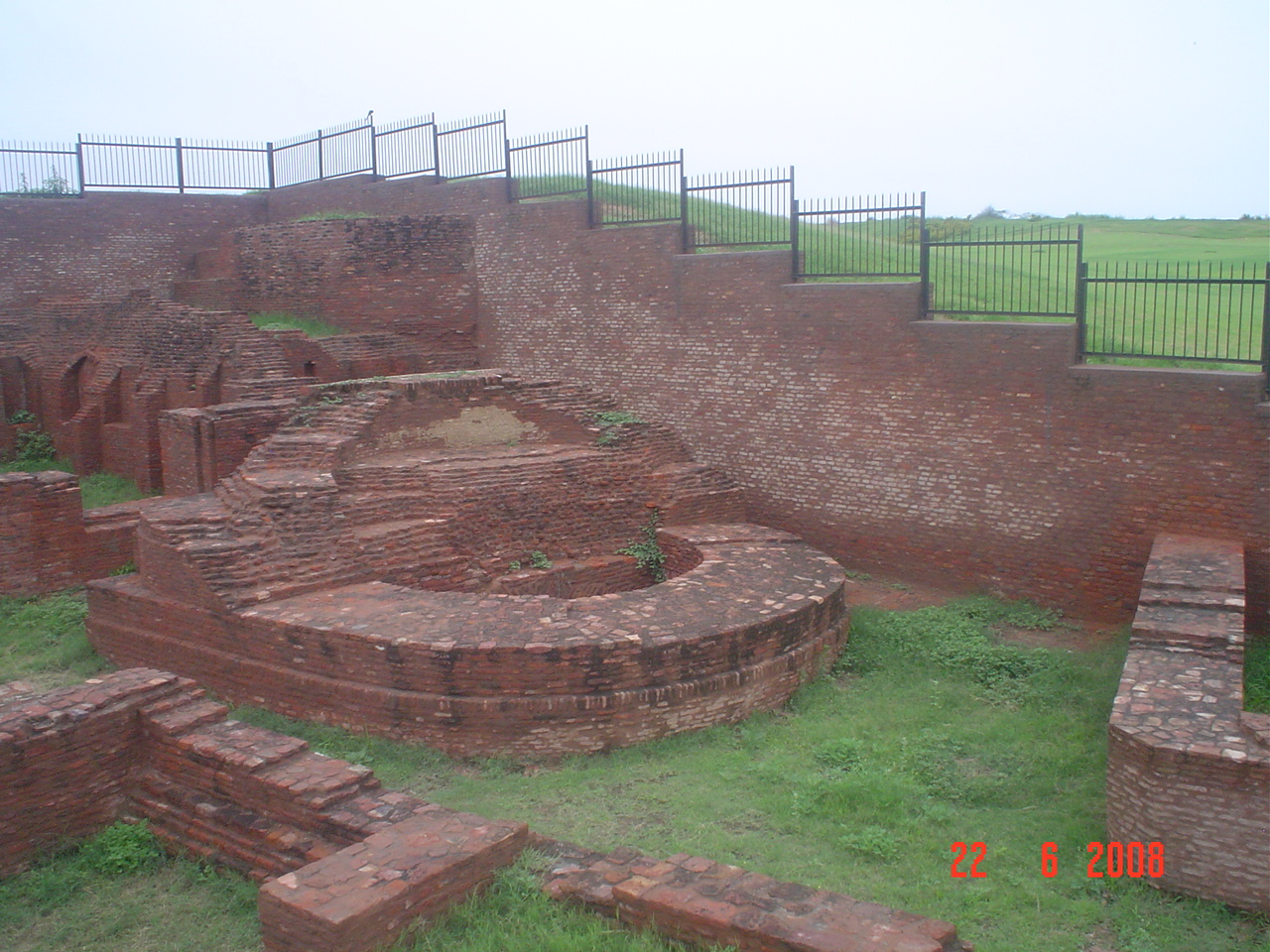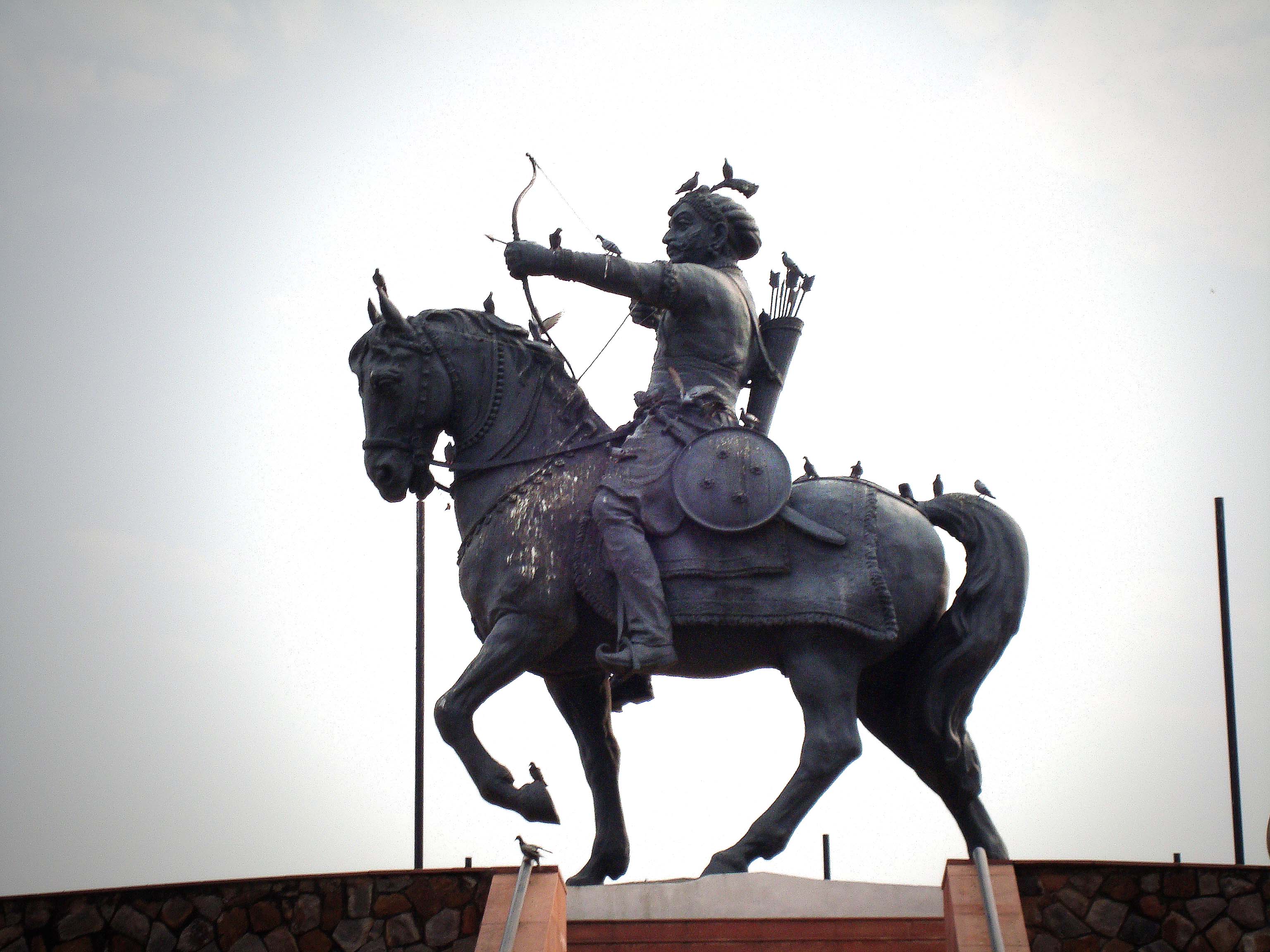|
Jatwan
Jatwan was a chieftain of present-day Haryana who rebelled against Qutb ud-Din Aibak of the Delhi Sultanate in 1192 CE. He finds a mention in Hasan Nizami's ''Tajul-Ma'asir'', according to which the Delhi army defeated and killed him on the border of Bagar region. Allegiance Henry Miers Elliot thought Jatwan to be a leader of Jats, a claim repeated by later writers. For example, Kalika Ranjan Qanungo believed that Jatwan led a Jat rebellion against Aibak. However, the contemporary writer Hasan Nizami, who provides information about Jatwan's rebellion, does not state this. Elliot's guess appears to be based on the similarity of the words "Jatwan" and "Jat", and the rebellion's locality, where Jats can be found. According to S.H. Hodivala, "Jatwan" is a mistranscription of the "Chahwan" in the manuscript, and the rebel was probably a Chahamana (Chawhan or Chauhan) subordinate of Prithviraja III. According to Rima Hooja, it is probably a corrupt form of the name "Jaitra". Rebel ... [...More Info...] [...Related Items...] OR: [Wikipedia] [Google] [Baidu] |
Qutb Ud-Din Aibak
Qutb ud-Din Aibak (; 1150 – 4 November 1210) was a Turkic general of the Ghurid emperor Muhammad Ghori. He was in charge of the Ghurid territories in northern India, and after Muhammad Ghori's assassination in 1206, he established his own independent rule in Lahore, and laid the foundations for the Sultanate of Delhi. A native of Turkestan, Aibak was sold into slavery as a child. He was purchased by a Qazi at Nishapur in Persia, where he learned archery and horse-riding among other skills. He was subsequently resold to Muhammad Ghori in Ghazni, where he rose to the position of the officer of the royal stables. During the Khwarazmian-Ghurid wars, he was captured by the scouts of Sultan Shah; after the Ghurid victory, he was released and highly favoured by Muhammad Ghori. After the Ghurid victory in the Second Battle of Tarain in 1192, Muhammad Ghori made Aibak in charge of his Indian territories. Aibak expanded the Ghurid power in northern India by conquering and raidin ... [...More Info...] [...Related Items...] OR: [Wikipedia] [Google] [Baidu] |
Hansi
Hansi, is a city and municipal council in Hisar district in the Indian state of Haryana. It appears that at one time Hansi was larger, more prosperous and more important than Hisar. The town has several important buildings of archeological importance. In 2016, the Haryana government put forward a proposal to carve the new Hansi district out of the Hisar district. History It is believed that Hansi was founded by King Anangpal Vihangpal Tomar for his guru "''Hansakar''" (957 AD). Later, the son of King Anangpal Tomar, Drupad established a sword manufacturing factory in this fort, hence it is also called " Asigarh". Swords from this fort were exported as far away as to Arab countries. As per ''Talif-e-Tajkara-e-Hansi'' by Qazi Sharif Husain in 1915, around 80 forts across the area were controlled from this centre "Asigarh". A few also say that it was founded by ill daughter ''Hansivati/Ambavati'' of Prithvi Raj Chauhan though there exists no proof of Prithiviraj's daughter by ... [...More Info...] [...Related Items...] OR: [Wikipedia] [Google] [Baidu] |
Haryana
Haryana () is a States and union territories of India, state located in the northern part of India. It was carved out after the linguistic reorganisation of Punjab, India, Punjab on 1 November 1966. It is ranked 21st in terms of area, with less than 1.4% () of India's land area. The state capital is Chandigarh, which it shares with the neighbouring state of Punjab; the most populous city is Faridabad, a part of the National Capital Region (India), National Capital Region. The city of Gurgaon is among India's largest financial and technology hubs. Haryana has Divisions of Haryana, administrative divisions, List of districts of Haryana, districts, 72 sub-divisions, 93 tehsil, revenue tehsils, 50 sub-tehsils, 140 Community development block in India, community development blocks, 154 List of cities in Haryana by population, cities and towns, 7,356 villages, and 6,222 Gram panchayat, villages panchayats. Haryana contains 32 special economic zones (SEZs), mainly located within the ... [...More Info...] [...Related Items...] OR: [Wikipedia] [Google] [Baidu] |
Delhi Sultanate
The Delhi Sultanate or the Sultanate of Delhi was a Medieval India, late medieval empire primarily based in Delhi that stretched over large parts of the Indian subcontinent for more than three centuries.Delhi Sultanate Encyclopædia Britannica The sultanate was established around in the former Ghurid Empire, Ghurid territories in India. The sultanate's history is generally divided into five periods: Mamluk dynasty (Delhi), Mamluk (1206–1290), Khalji dynasty, Khalji (1290–1320), Tughlaq dynasty, Tughlaq (1320–1414), Sayyid dynasty, Sayyid (1414–1451), and Lodi dynasty, Lodi (1451–1526). It covered large swaths of territory in modern-day India, Pakistan, Bangladesh, as well as some parts of southern Nepal. The foundation of the Sultanate was established by the Ghurid conqueror Muhammad of Ghor, Muhammad ... [...More Info...] [...Related Items...] OR: [Wikipedia] [Google] [Baidu] |
Hasan Nizami
Hasan Nizami was a Persian language poet and historian, who lived in the 12th and 13th centuries. He migrated from Nishapur to Delhi in India, where he wrote ''Tajul-Ma'asir'', the first official history of the Delhi Sultanate. Early life Little is known about the family background of Hasan Nizami, since neither him nor his contemporaries provide any such information. The later historians such as Mīr-Khvānd, Abu'l-Fazl and Kâtip Çelebi call him "Sadru-din Muhammad bin Hasan Nizami". Ziauddin Barani calls him "Sadr-i-Nizami". According to the 14th century Persian historian Hamdallah Mustawfi, Nizami was a son of Persian poet Nizami Aruzi, but there is no evidence to substantiate this claim. Nizami originally lived in Nishapur, in the Khorasan region of present-day Iran. When the region became unsafe because of the Khwarazmian- Ghurid conflict, Nizami visited the Imam Reza shrine and sought advice from his religious preceptor Muhammad Kufi. Kufi advised him to leave N ... [...More Info...] [...Related Items...] OR: [Wikipedia] [Google] [Baidu] |
Bagar Region
Bagar, also Bagad (बागड़) a term meaning the "dry country",Nonica Datta The Tribune (Chandigarh), The Tribune, 3 July 1999. is a region refers in north-western India in north Rajasthan, West Haryana, south west Punjab, India where the Bagri language is spoken and which is inhabited by Bagri people. The region is characterised by sandy tracks and shifting sand dunes which are now irrigated by canals. Etymology Bagar means the prairie (grazing shrubs and grassland) of northern Rajputana,Elaine King,1998, Tales & legends of India, Page 61. which likely comes from eponymous Arabic word "baqar" or "bagar" (بقرة) meaning "cow" (Cattle in religion and mythology#Hinduism, sacred to Hindus),2002, Abubakar Garba, "State, city and society: processes of urbanisation", University of Maiduguri – Centre for Trans Saharan Studies, Archaeological Association of Nigeria, Page 82. derived from the Arabic word "cattle".Mohamet Lawan, 1997, No travel is little, Page 66. ''Baggara'' ... [...More Info...] [...Related Items...] OR: [Wikipedia] [Google] [Baidu] |
Henry Miers Elliot
Sir Henry Miers Elliot (1 March 1808 – 20 December 1853) was an English civil servant and historian who worked with the East India Company in India for 26 years. He is most known for '' The History of India, as Told by Its Own Historians'' based on his works, published posthumously in eight volumes, between 1867–1877 in London. Early life and background Elliot was born on 1 March 1808. He was the third son, one of fifteen children, of John Elliot, of Pimlico Lodge, Westminster, colonel commandant of the Westminster volunteers, and a daughter of John Coakley Lettsom, M.D. He was educated from the age of ten at Winchester College, and destined for New College, Oxford; but the demand of the East India Company for civilians beyond the numbers regularly trained at Haileybury tempted him to try for an appointment in their service, and he was the first of the ' competition wallahs' to pass an open examination for an immediate post in India. His oriental languages as well as his c ... [...More Info...] [...Related Items...] OR: [Wikipedia] [Google] [Baidu] |
Jats
The Jat people (, ), also spelt Jaat and Jatt, are a traditionally agricultural community in Northern India and Pakistan. Originally pastoralists in the lower Indus river-valley of Sindh, many Jats migrated north into the Punjab region in late medieval times, and subsequently into the Delhi Territory, northeastern Rajputana, and the western Gangetic Plain in the 17th and 18th centuries. Quote: "Hiuen Tsang gave the following account of a numerous pastoral-nomadic population in seventh-century Sin-ti (Sind): 'By the side of the river.. f Sind along the flat marshy lowlands for some thousand li, there are several hundreds of thousands very great manyfamilies .. hichgive themselves exclusively to tending cattle and from this derive their livelihood. They have no masters, and whether men or women, have neither rich nor poor.' While they were left unnamed by the Chinese pilgrim, these same people of lower Sind were called Jats' or 'Jats of the wastes' by the Arab geographers. ... [...More Info...] [...Related Items...] OR: [Wikipedia] [Google] [Baidu] |
Chahamanas Of Shakambhari
The Chahamanas of Shakambhari (IAST: Cāhamāna), colloquially known as the Chauhans of Sambhar or Chauhans of Ajmer, were an Indian dynasty that ruled parts of present-day Rajasthan and neighbouring areas between the sixth and twelfth centuries in the Indian subcontinent. The territory ruled by them was known as Sapadalaksha. They were the most prominent ruling family of the Chauhan dynasty, Chauhan Rajput clan. The Chahamanas originally had their capital at Sambhar Lake Town, Shakambhari (present-day Sambhar Lake Town). Until the 10th century, they ruled as Gurjara-Pratihara dynasty, Pratihara vassals. When the Pratihara power declined after the Tripartite Struggle, the Chahamana ruler Simharaja assumed the title Maharajadhiraja. In the early 12th century, Ajayaraja II moved the kingdom's capital to Ajayameru (modern Ajmer). For this reason, the Chahamana rulers are also known as the "Chauhans of Ajmer". The Chahamanas fought several wars with their neighbours, including th ... [...More Info...] [...Related Items...] OR: [Wikipedia] [Google] [Baidu] |
Prithviraja III
Prithviraja III (IAST: Pṛthvī-rāja; 22 May 1166 – February 1192), popularly known as Prithviraj Chauhan or Rai Pithora, was a king from the Chahamanas of Shakambhari, Chauhan (Chahamana) dynasty who ruled the territory of Sapadalaksha, with his capital at Ajmer in present-day Rajasthan in north-western India. Ascending the throne as a minor in 1177 CE, Prithviraj inherited a kingdom which stretched from Thanesar in the north to Jahazpur, Jahazpur (Mewar) in the south, which he aimed to expand by military actions against neighbouring kingdoms, most notably defeating the Chandelas of Jejakabhukti, Chandelas. Prithviraj led a coalition of several Rajput kings and defeated the Ghurid dynasty, Ghurid army led by Muhammad of Ghor near First Battle of Tarain, Taraori in 1191 However, in 1192, Muhammad returned with an army of Turkish archery, Turkish mounted archers and defeated the Rajput army Second battle of Tarain, on the same battlefield. Prithviraj was captured and summarl ... [...More Info...] [...Related Items...] OR: [Wikipedia] [Google] [Baidu] |






